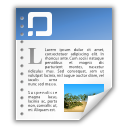| dc.contributor.author | Endler, Regina | |
| dc.date.accessioned | 2008-08-18T18:40:16Z | |
| dc.date.available | 2008-08-18T18:40:16Z | |
| dc.date.issued | 2008-06-15T18:40:16Z | |
| dc.identifier.uri | http://hdl.handle.net/1803/1218 | |
| dc.description | Teaching and Learning Department Capstone project | en |
| dc.description.abstract | The objective of this paper is to focus on adapting and preparing guided reading instruction for multicultural students between kindergarten and third grade. Guided reading is an instructional practice used in balanced literacy programs in order to support students' reading development (Calkins, 2001; Fountas & Pinnell, 1996; Opitz & Ford, 2001). While guided reading is designed to help readers develop independent reading skills, I have personally worked with students challenged by the traditional practice and walked away wondering how we could improve the method. The challenges I personally faced with guided reading relate specifically to non diverse reading materials, limited knowledge of student's background, strict time constraints inherent to some guided reading models, and the inability for some learners to meet all lesson objectives. I believe these challenges stem from the lack of cultural sensitivity exhibited in books and in instruction. Because these challenges exist, additional support and adaptation to the traditional guided reading model are crucial for meeting the needs of diverse learners. Improvement to guided reading for diverse learners would include: Adapting allotted time for guided reading sessions based on the individual, incorporating literature that is culturally meaningful to the readers, and building on the background and experiences of the students. These changes would greatly benefit the individual reader, creating a rich text that is meaningful to his or her life experiences, thus making the challenge of learning to read more catered to the individual.
I believe instilling a passion for reading in children at an early age is crucial to their academic success. Thus, adapting guided reading with a meaningful text early on could potentially spark the passion in young learners. Learning to read is a challenge for all students, but becomes even more overwhelming when the young reader is unable to relate to the material and thus becomes detached from the context. My objective is to adapt the guided reading model to the individual learner, thus embracing multiculturalism and giving the students the tools necessary to become independent readers from the start, adapting the model when necessary to ensure the continued progress of the learner. | en |
| dc.language.iso | en_US | en |
| dc.publisher | Vanderbilt University. Peabody College | |
| dc.subject | Guided reading | en |
| dc.subject | Multicultural elementary school students | en |
| dc.subject.lcsh | Multicultural education | en |
| dc.subject.lcsh | Language arts (Elementary) | en |
| dc.subject.lcsh | Reading (Elementary) | en |
| dc.subject.lcsh | Guided reading | en |
| dc.title | Getting Guided Reading Right in Multicultural Classrooms K - 3 | en |
| dc.type | Capstone | en |
| dc.description.college | Peabody College of Education and Human Development | en |
| dc.description.department | Department of Teaching and Learning | en |

